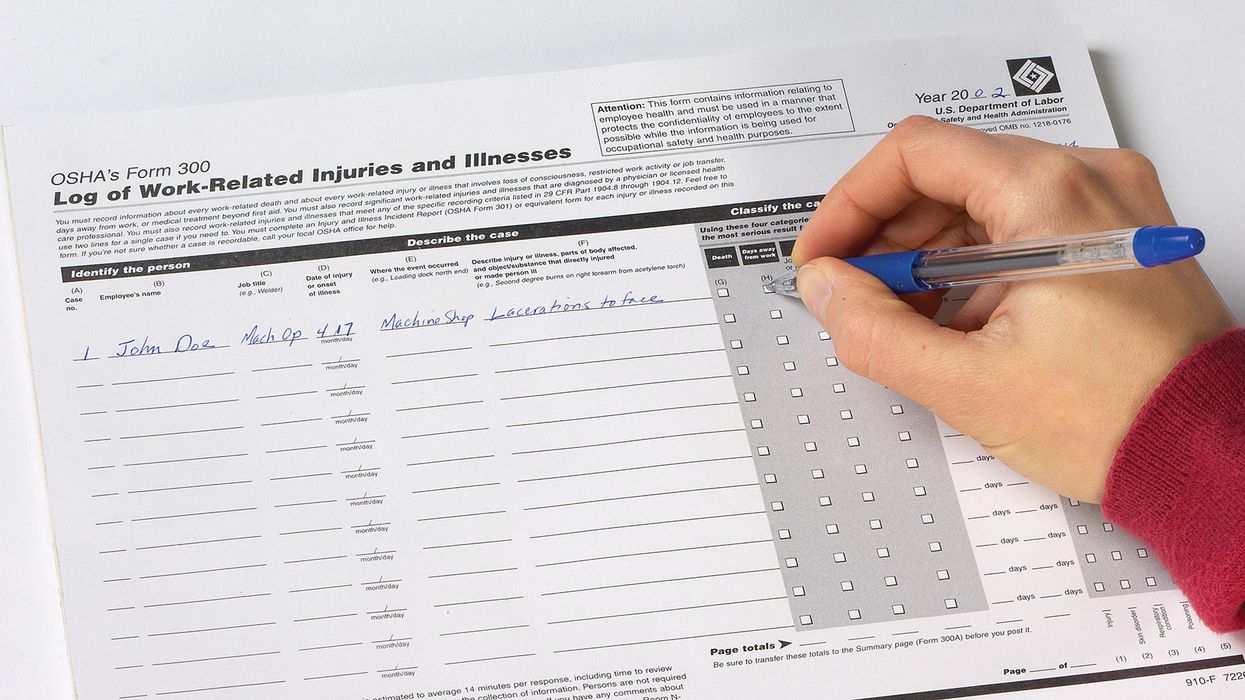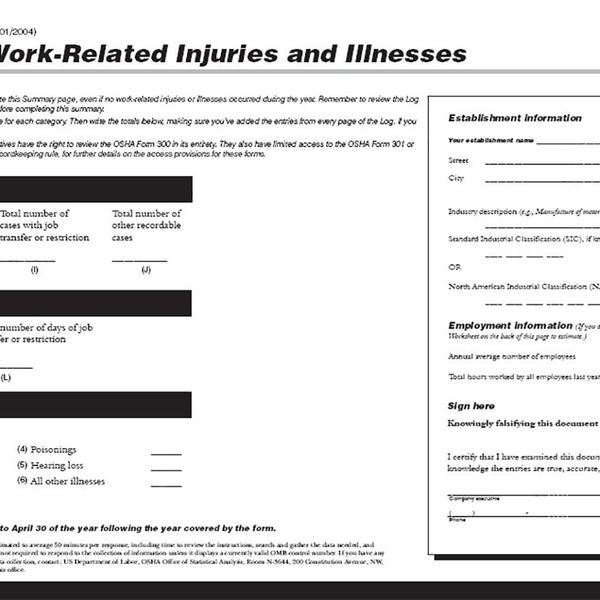From yule log to OSHA log: Time to start preparing to report
OSHA requires employers with more than 10 employees to maintain a record of work-related injuries and illnesses. Reports must be submitted by March 2nd of the year after the calendar year covered by the form. Certain employers, such as establishments with 20 or more employees in specified high-hazard industries, are required to submit their annual summary electronically.
Completing the OSHA 300 Log
Don’t let the OSHA 300 Log intimidate you! Think of it as just a way to classify work-related injuries and illnesses in an easy-to-read format. This is to be done for each physical location that’s in operation for a year or more.
Here are some helpful tips to avoid common stumbling blocks:
- Have a clear understanding of what’s recordable and what’s first aid only.
- Be transparent and include all recordable incidents and illnesses.
- Identify which cases may have privacy concerns and list them appropriately as “privacy case” rather than by name. (NOTE: Maintain a separate, confidential log of case numbers and employee names for privacy cases.)
- Be as specific as possible when describing the case location and time.
- Record the most serious outcome associated with the case.
- Know how to calculate days away from work and days of restricted work activity or transfer.
- If a case outcome changes, draw a line through the original entry and write the new entry where it belongs.
Key definitions
- First Aid incident: A work-related injury or illness that meets the following:
- Use of non-prescription medication at non-prescription strength;
- Administration of tetanus immunizations, cleaning, flushing or soaking wounds on the surface of the skin;
- Use of wound coverings such as bandages, gauze pads, or sterile strips;
- Use of hot or cold therapy;
- Use of non-rigid splints such as elastic or wraps;
- Use of temporary immobilization devices while transporting a victim, drilling of a fingernail or toenail to relieve pressure, or draining fluid from a blister; or
- Use of eye patches.
- Recordable: A work-related injury or illness that meets the following:
- Fatatlity;
- Results in loss of consciousness, days away from work, restricted work, or job transfer;
- Requires medical treatment beyond first aid;
- Diagnosed case of cancer, chronic irreversible diseases, fractured or cracked bones or teeth, and punctured eardrums; or
- Meets special recording criteria for needlesticks and sharps use, medical removal, hearing loss, and tuberculosis.
- Work-related: An incident or exposure within the work environment that either caused or contributed to an injury or illness or significantly aggravated a pre-existing injury or illness.
Maintaining and posting records
A summary of the OSHA 300 Log must be posted on February 1st and can be removed from posting on April 30th. The summary is the OSHA 300A and must be completed even if no work-related injuries or illnesses occurred during the year.
The OSHA summary and reports are maintained and posted for the benefit of the company and workers. The information helps evaluate the workplace and identify hazards so proper corrections can be made to prevent recurrence. Workers should be encouraged to review the posted information and ask any questions they may have.
The OSHA 300 Log and the 300A Summary must be maintained at the worksite for at least five years following the year to which they pertain. These can be maintained either on paper or electronically.
Key to remember
It’s time for employers with more than 10 employees to prepare their OSHA 300 injury and illness logs for submission by March 2nd. The OSHA 300A summary must be posted in a conspicuous location from February 1st to April 30th. Employers and employees should use the information to get a bird’s eye view of the extent and severity of workplace incidents to prevent them from happening again.


















































